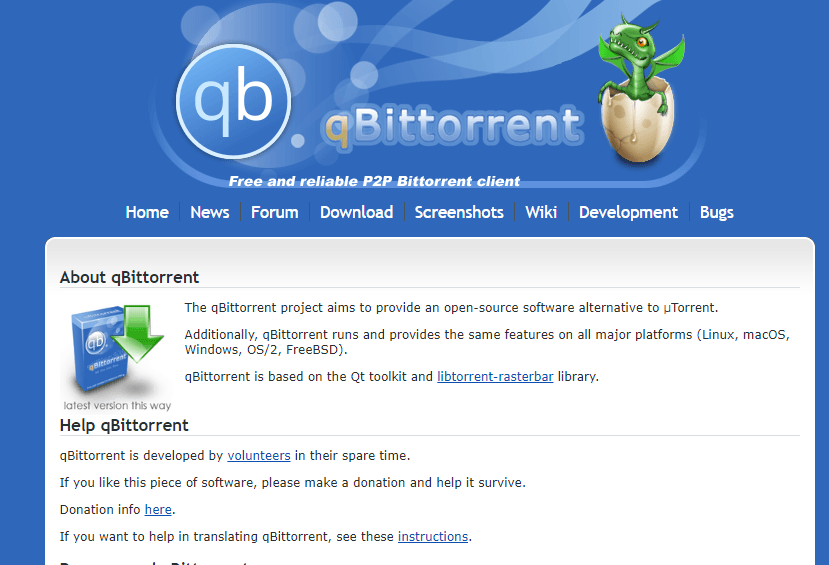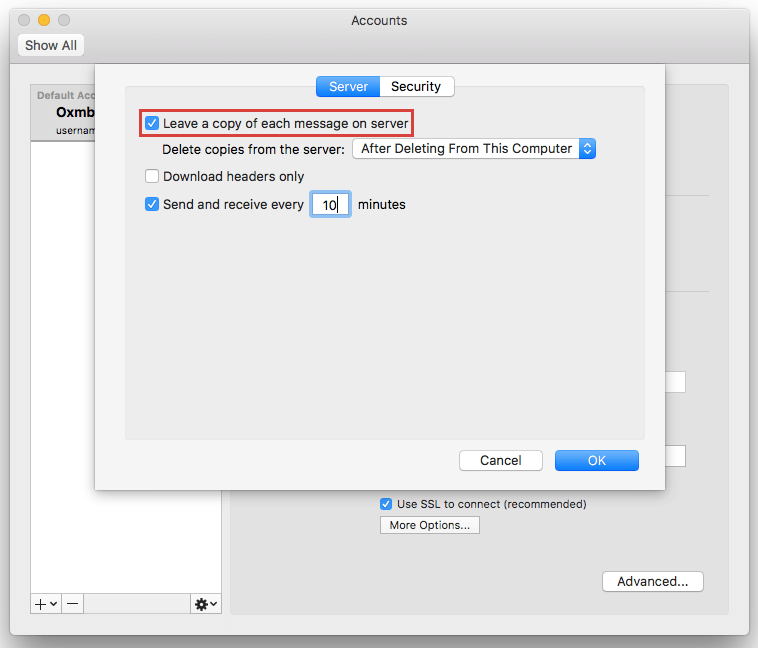Add or remove email accounts in Mail on Mac. Use the Mail app to send, receive, and manage email for all of your email accounts in one location. Simply add the accounts—such as iCloud, Exchange, Google, school, work, or other—you want to use in Mail. Select Done to start using Outlook 2016 for Mac. Improved authentication for existing Gmail users If you have a Google account added to Outlook for Mac earlier to the release of improved authentication experience for Google IMAP accounts, then you will need to sign-in. Avigilon Control Center (ACC) 7 is the latest and most advanced version of ACC™ video management software. Designed to bring the right information to you so that you can take action, ACC 7 provides an easy-to-use, AI-enabled user interface to help ensure critical events do not go unnoticed. COVID-19 Response Technology.
Instant Client Release Notes
The following section contains information about the issue related to Oracle Database Instant Client 12 c: Pro.C Does Not Support C99 Headers. The Pro.C parser fails to recognize C99 headers on Apple Mac OS X El Captain, Apple Mac OS X Yosemite, and Apple Mac OS X.
12c Release 2 (12.2) for Apple Mac OS X (Intel)

E87948-01
June 2017
- Oracle’s Instant Client is a valuable tool allowing anyone on a Mac to connect to Oracle databases, and is a prerequisite for installing SQL Developer, SQLPlus, or OCI8 (for PHP connectivity). However, Oracle’s documentation for installing Instant Client is very light.
- 适用于 Apple Mac OS X 的 Oracle Database 10 g 第 1 版 (10.1.0.3) 快速安装指南 在 Mac OS X 上使用 Oracle JDeveloper 10g Apple Developer Connection 如何在 Leopard 上安装 Ruby 和 Oracle Instant Client 10.2.0.4 Raimonds Simanovskis.
- Instant Client Downloads for macOS (Intel x86) See the Instant Client Home Page for more information about Instant Client. The installation instructions are at the foot of the page. Client-server version interoperability is detailed in Doc ID 207303.1.For example, Oracle Call Interface 19.3 and 18.1 can connect to Oracle Database 11.2 or later.
- The following or later versions of the operating system are supported for Oracle Database 11 g Release 2 (11.2): Apple Mac OS X Lion 10.7.3. Starting with release 11.2.0.3, Oracle Database Client is supported on Apple Mac OS X (Intel)(32-Bit) and Apple Mac OS X (Intel)(64-Bit). Apple Mac OS X Mountain Lion 10.8.2.
1.1
This document contains important information that was not included in the platform-specific or product-specific documentation for this release.
This document supplements Oracle Database Readme.
This document may be updated after it is released. You can check for updates to this document and view other Oracle documentation at
This document contains the following topics:
1.2 Certification Information
The latest certification information for Oracle Database 12c Release 2 (12.2) is available on My Oracle Support at
Acc Client For Mac High Sierra
1.3 Unsupported Products
Acc Client For Mac Os
The following features or products are not supported on Apple Mac OS X:
Pro*FORTRAN
Pro*COBOL
1.4 Other Known Issues
The following section contains information about the issue related to Oracle Database Instant Client 12c:
Pro*C Does Not Support C99 Headers
The Pro*C parser fails to recognize C99 headers on Apple Mac OS X El Captain, Apple Mac OS X Yosemite, and Apple Mac OS X Mavericks.
This issue has no workaround.
This issue is tracked with Oracle bug 16061064.
1.5 Documentation Accessibility
For information about Oracle's commitment to accessibility, visit the Oracle Accessibility Program website at http://www.oracle.com/pls/topic/lookup?ctx=acc&id=docacc.
Access to Oracle Support
Oracle customers that have purchased support have access to electronic support through My Oracle Support. For information, visit http://www.oracle.com/pls/topic/lookup?ctx=acc&id=info or visit http://www.oracle.com/pls/topic/lookup?ctx=acc&id=trs if you are hearing impaired.
Oracle Database Instant Client Release Notes, 12c Release 2 (12.2) for Apple Mac OS X (Intel)
E87948-01
Copyright © 2015, 2017, Oracle and/or its affiliates. All rights reserved.
Primary Authors: Bharathi Jayathirtha, (primary author)
Oracle Database Client For Mac Os X 10.7
Contributing Authors: (contributing author), (contributing author)
Contributors: (contributor), (contributor)

This software and related documentation are provided under a license agreement containing restrictions on use and disclosure and are protected by intellectual property laws. Except as expressly permitted in your license agreement or allowed by law, you may not use, copy, reproduce, translate, broadcast, modify, license, transmit, distribute, exhibit, perform, publish, or display any part, in any form, or by any means. Reverse engineering, disassembly, or decompilation of this software, unless required by law for interoperability, is prohibited.
The information contained herein is subject to change without notice and is not warranted to be error-free. If you find any errors, please report them to us in writing.
If this is software or related documentation that is delivered to the U.S. Government or anyone licensing it on behalf of the U.S. Government, then the following notice is applicable:
U.S. GOVERNMENT END USERS: Oracle programs, including any operating system, integrated software, any programs installed on the hardware, and/or documentation, delivered to U.S. Government end users are 'commercial computer software' pursuant to the applicable Federal Acquisition Regulation and agency-specific supplemental regulations. As such, use, duplication, disclosure, modification, and adaptation of the programs, including any operating system, integrated software, any programs installed on the hardware, and/or documentation, shall be subject to license terms and license restrictions applicable to the programs. No other rights are granted to the U.S. Government.
This software or hardware is developed for general use in a variety of information management applications. It is not developed or intended for use in any inherently dangerous applications, including applications that may create a risk of personal injury. If you use this software or hardware in dangerous applications, then you shall be responsible to take all appropriate fail-safe, backup, redundancy, and other measures to ensure its safe use. Oracle Corporation and its affiliates disclaim any liability for any damages caused by use of this software or hardware in dangerous applications.
Oracle Database Client For Mac Os X64

Oracle and Java are registered trademarks of Oracle and/or its affiliates. Other names may be trademarks of their respective owners.
Intel and Intel Xeon are trademarks or registered trademarks of Intel Corporation. All SPARC trademarks are used under license and are trademarks or registered trademarks of SPARC International, Inc. AMD, Opteron, the AMD logo, and the AMD Opteron logo are trademarks or registered trademarks of Advanced Micro Devices. UNIX is a registered trademark of The Open Group.

Oracle On Mac
This software or hardware and documentation may provide access to or information about content, products, and services from third parties. Oracle Corporation and its affiliates are not responsible for and expressly disclaim all warranties of any kind with respect to third-party content, products, and services unless otherwise set forth in an applicable agreement between you and Oracle. Oracle Corporation and its affiliates will not be responsible for any loss, costs, or damages incurred due to your access to or use of third-party content, products, or services, except as set forth in an applicable agreement between you and Oracle.
Mail User Guide
Use the Mail app to send, receive, and manage email for all of your email accounts in one location. Simply add the accounts—such as iCloud, Exchange, Google, school, work, or other—you want to use in Mail.
Add an email account to use in Mail
The first time you open the Mail app on your Mac, it may prompt you to add an account. Select an account type—if you don’t see your type, select Other Mail Account—then enter your account information.
If you already added an email account, you can still add more. In Mail, choose Mail > Add Account, select an account type, then enter your account information. Make sure the Mail checkbox is selected for the account.
If you’re using an account on your Mac with other apps, such as Contacts or Messages, you can also use that account with Mail. In Mail, choose Mail > Accounts to open Internet Accounts preferences, select the account on the left, then select the Mail checkbox on the right.
Temporarily stop using an email account in Mail
In the Mail app on your Mac, choose Mail > Accounts.
Select the account, then deselect the Mail checkbox.
Now the account’s messages are not shown in Mail.
Start using an email account again in Mail
In the Mail app on your Mac, choose Mail > Accounts.
Select the account, then select the Mail checkbox.
The account’s messages are shown again in Mail; they don’t need to be downloaded from the server again.
Remove an email account from Mail
When you remove an email account from Mail, the account’s messages are deleted and no longer available on your Mac. Copies of messages remain on the account’s mail server and are still available (from webmail, for example).
Important: If you’re unsure whether messages you want to keep are still on the mail server, move or copy them to a mailbox stored on your Mac (the mailbox appears in the On My Mac section in the Mail sidebar) before you delete the account in Mail.
In the Mail app on your Mac, choose Mail > Preferences, then click Accounts.
Select an account, then click the Remove button .
Note: If the account is used by other apps on your Mac, you’re asked to remove the account in Internet Accounts System Preferences. Click the button to open Internet Accounts, then deselect the Mail checkbox for the account. To stop using the account in all apps, make sure the account is selected, then click the Remove button .
